In recent years, social media has shifted from providing mainly communication channels and entertainment platforms to becoming a means of marketing and growing businesses, contributing to significant political and social discussions, and raising awareness about crucial topics. Considering how much revenue apps like Tiktok ($23 billion in 2024) or Facebook ($164.5 billion in 2024) generate, it’s no wonder many businesses want to create an app of their own.
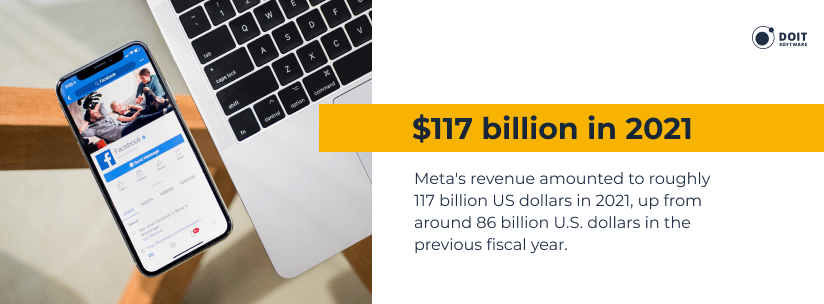
However, creating a social media app that attracts many people and becomes almost essential in their daily lives is not an easy undertaking. How to make a social media app that manages to pull in enough audience, and deliver the best user experience to generate income? In this article, we will answer this question as well as explore the process of social media app development, primary and additional features, take a look at monetization models and user acquisition strategies, as well as learn the costs of app development.
Excited to create a social network like Facebook but even better?
Contact DOIT Software to learn more about the development process and get a quote.
When you hear about social media apps, you probably think about Facebook, Instagram or Tiktok, but there are different types of platforms that fall into this category. Let’s take a look at the main types of social media apps and which problems they strive to solve.
Social network apps are the solutions that first come to mind: Facebook, Instagram and others. The main goal of such apps is to connect people and provide a platform for sharing thoughts, experiences and images. Nowadays, they have transcended their initial purpose and become useful marketing tools for both big and small companies. LinkedIn is another example of a social network app, even though it nurtures mainly business relationships.
How to make a social media app for sharing media? These networks allow users to exchange all kinds of media, such as videos, photos, GIFs, etc. Media sharing channels are platforms like YouTube, Snapchat, and Tiktok, that encourage user-generated content that creators can make, upload, edit, curate, and share. Such platforms also allow for establishing profiles, adding information about themselves, interacting with other creators, and commenting on videos and photos.
Now users can even monetize their content through AdSense, special programs like the YouTube Partner Program, sponsorships, donations, and patronage, which makes these platforms even more appealing to the public. And empowering your app with unique features, such as an MP4 compressor, will help you to stay ahead of your competitors. By incorporating features like an AI video generator, developers can create more compelling and interactive media-sharing social media apps.
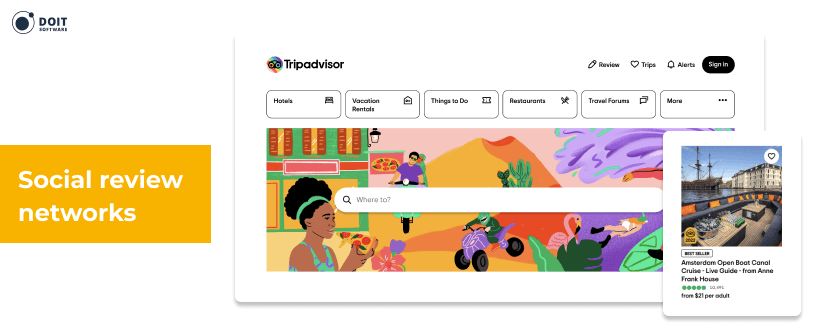
Such apps provide social proof about products and services and help people to find information about companies without first wasting their own time and money. How to create a social media app for social reviews? Sites like Yelp and TripAdvisor are the best examples, as they are platforms where you can read and create reviews about restaurants, hotels, beauty salons, and other businesses.
These platforms are also a goldmine to the business owner if they study the reviews and utilize them to improve their businesses and enhance user experience. Additionally, companies can use social platforms for self-promotion and brand awareness.
Even though discussion forums may be slightly losing in popularity with social networks on the rise, they are staying relevant to many communities. How to create a social media platform for community and discussion forums? Sites like Reddit allow people to connect on small topics, share their unique experiences and find communities of people that go through similar experiences.
Quora is another example of such a forum where people can ask a question regarding virtually any topic and users answer their inquiries as well as they can. Sometimes it can be challenging to find a community on large platforms like Facebook, and discussion forums facilitate the creation of small communities of people with specific interests.
How to make a social app for bookmarking and content curation with a clear monetization strategy and helpful features? Bookmarking sites help users organize their resources and websites by tagging links and categorizing the tags. They can also discover other people’s content and save the exciting parts. Platforms like Pinterest are also used for marketing activities to promote businesses, blogs, youtube channels, and other creative works.
These platforms should not be confused with content management systems (CMS) like Wix or WordPress. Blogging and publishing platforms allow users to create their profiles and share their posts about various topics without building a website and paying hosting fees. How to build a social media app for blogging and self-publishing?
Sites like Medium and Tumblr give people a chance to share a thought on a large platform any time they want. This is also a lucrative opportunity for businesses to spread the message about their company and products for millions of people to see.
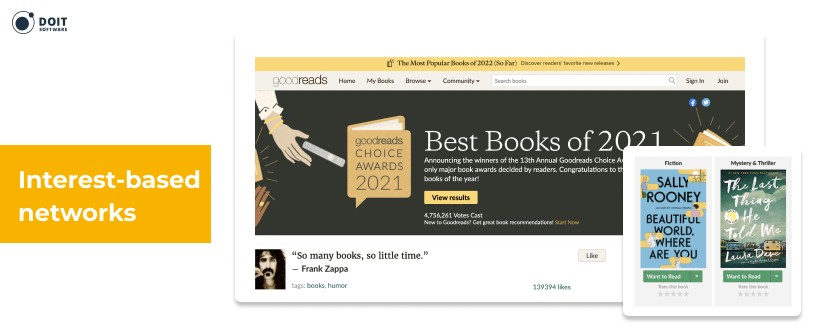
How to make a social media app that focuses on a specific topic or hobby? For example, GoodReads allows users to share their thoughts about books they have read and create recommendation lists. You can develop an application that caters to the interests of a particular group of people and choose a fitting marketing and monetization strategy.
Anonymous social sites allow users to ask questions or share a story without revealing their identity. These platforms are especially popular among teenagers as they want to discuss controversial topics and often don’t have anyone in their lives to do that with.
How to create a special network app for an anonymous share with a lucrative monetization model? The most known app is Whisper, where users can post confessions and share their stories with the public. This solution works on a subscription basis and charges users with a monthly fee.
The most world-renowned microblogging platforms are Plurk or Twitter (X), where people can share short entries with a maximum of 280 characters. Users are encouraged to comment and retweet the posts and engage in discussions. This feature attracts business owners that can promote their products and services in an engaging and fun way.
This method of blogging also appeals to users since not everyone wants to create and curate a blogging website. Small entries, news, messages and comments on current events are a lot easier to post and maintain on such microblogging platforms.
Get in touch with us and we will help you to make a social networking app with advanced features, excellent design, and great performance.
DOIT Software is a social networking app development company that has experience in how to make a social media app with Apache Cordova, React, or Flutter.
Contact us to learn about the benefits of cross-platform development for your new social media app.
Although the exact set of features depends on the type of app and the desired complexity, there are a few functions that every social media application should include. How to make a social media app that caters to users’ needs and provides value? Start by planning and developing the main features for your MVP.
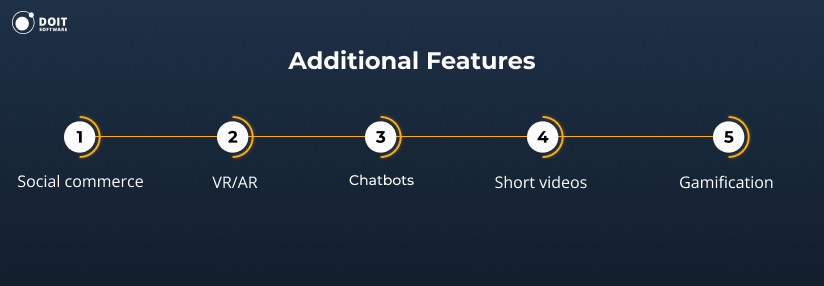
Besides essential features, you may want to expand your palette with some additional functions that can make your app more useful, engaging, and unique. How to create a social media platform with high user retention and lower user acquisition costs? By offering exciting unique features, such as social commerce, gamification, and more.

As mentioned above, most social media apps use advertisements as their primary monetization strategy. The ads can be embedded in the videos or placed on the news feed page to be visible to the user. Another popular monetization option is in-app purchases, like what Tiktok offers. For example, you can set up an in-app currency to allow donations. Freemium is a model that offers a free version of the app and provides more functions with a premium package that comes at a certain cost. However, since most social media apps that are available today are free, it might not be the best option. Finally, you can build a social media app on a subscription basis and charge a monthly or yearly fee. You can easily automate your subscription billing for each user by integrating it with SaaS subscription billing software.
The cost of social media app development depends on the tech stack, the number of features, overall app complexity, and the location of the development team. For example, if you are wondering how to make a social media app like Tiktok, here is an overview:
Using technologies like React Native for the frontend, Python for the backend and PostgreSQL for the database, you can create a social networking site for $80,000 to $100,000 in six to nine months. Besides app development, the costs include admin panel development as well as the services of business analysts, project managers, QA specialists, and UX/UI designers.
Learning how to build a social network app is only one of the steps to launching a successful platform. You also need to promote and market it correctly to attract users and gain traction. There are a few strategies for acquiring users that we will be covering in the following section.
The next step here is user onboarding. It’s essential to introduce your product, show all the features, and provide assistance where it’s needed. Proper onboarding helps to retain users and transform them into loyal customers.
We’ve already discussed how to make a social media app that performs well and steadily gains traction. Now it’s time to move on to your app performance analysis. You should always be on the lookout for key performance metrics. To conduct a comprehensive tracking, capture the current KPIs, set reasonable goals for a period of time, monitor the changes, and compare the results to the expected numbers. In the next iteration, you can use the experience you have gained and adapt the marketing activities as well as set more realistic and attainable goals. Here is an overview of the most significant key efficiency indicators for a social media app owner to track:

The process of social network development is long and complex and requires thorough planning. Learn how to build a social media app with the following concise checklist.
The discovery phase includes learning the market trends, identifying business goals, gathering requirements, building wireframes and prototypes. In the process of understanding the market dynamics, many developers utilize tools like the SERP API to gather insights from Google’s search results and get a clearer view of the competition.
By the end of the discovery phase, you should have a list of features broken into two categories: essential and non-essential. The former entails the features that are absolutely necessary to solve the main user’s issue. Non-essential features are nice-to-haves and can be added in later iterations.
Research relevant app development companies with sufficient experience, extensive portfolios and suitable rates to undertake your project.
Alongside your development team, work out and fine-tune a UX/UI design for the app that fits the product, brand, and your target audience.
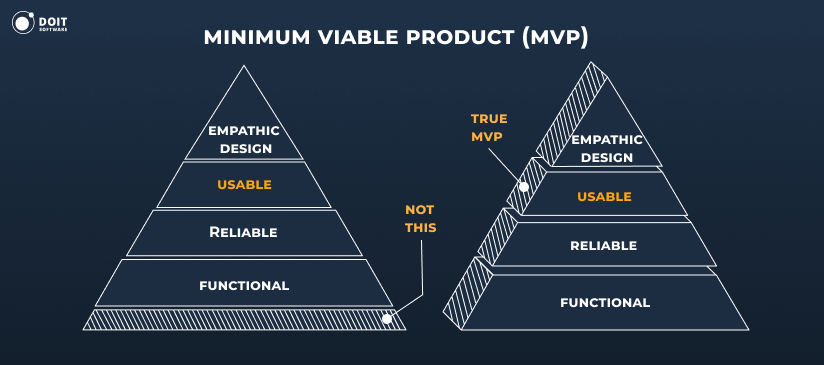
Make a social media app in a basic version with only the most essential features to validate the idea and adjust your app with necessary changes.
Conduct A/B testing to gather feedback from different demographics and utilize these insights to make the next version better and more appealing to the customer.
Despite being highly competitive, the social media apps market remains very lucrative and attractive to businesses. If you would like to realize your social application ideas and need a team of professionals to help you deliver a great product, contact DOIT Software. Our team of software developers knows how to make a social media app that looks great, performs well, and gets traction on the app store. Get in touch to discuss your concept and start working on your project together with us.
Transform your idea into a successful product with the DOIT Software team.
Contact usDepending on the type of app, they connect users to each other through engaging activities like blogging, video and photo posting and sharing, as well as messaging.
Social media application development costs vary based on app complexity, the number of features, and even the location of the vendor. On the lower side, a simple MVP app can cost you at least $30,000 but a more complex solution can be $60,000 and higher.
An MVP app like Instagram would cost you somewhere between $60,000 and $80,000.
A Facebook-like MVP application would cost you from $80,000 to $100,000.
The most often used monetization strategy for a social mobile app is advertisements. Some applications implement in-app currency or purchases to generate income, or offer a subscription-based structure.










